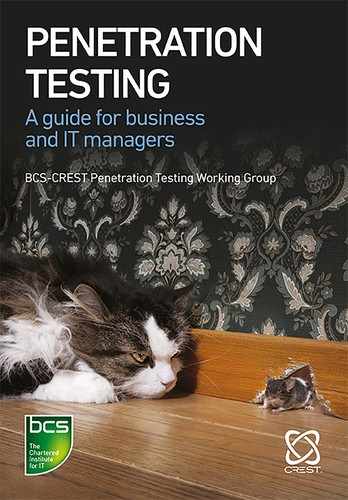0%
29Chapters
0-1Hours read
0kTotal Words
Table of Contents
- Front Cover
- Half-Title Page
- BCS, THE CHARTERED INSTITUTE FOR IT
- Title Page
- Copyright Page
- Contents
- List of figures and tables
- About the authors
- Foreword
- Abbreviations
- Glossary
- Preface
- 1. WHAT IS PENETRATION TESTING?
- 2. SUCCESSFUL PENETRATION TESTING: AN OVERVIEW
- 3. REGULATORY MANAGEMENT FOR PENETRATION TESTING
- 4. EMBEDDING PENETRATION TESTING WITHIN ORGANISATIONAL SECURITY POLICIES AND PROCEDURES
- 5. OUTCOME- AND INTELLIGENCE-LED PENETRATION TESTING
- 6. SCOPING A PENETRATION TEST
- 7. PENETRATION TEST COVERAGE AND SIMULATING THE THREAT
- 8. BUILDING ORGANISATIONAL CAPABILITY FOR PENETRATION TESTING
- 9. COMMISSIONING PENETRATION TESTS
- 10. SELECTING TOOLS FOR PENETRATION TESTING
- 11. GOOD PRACTICE FOR PENETRATION TESTING
- What is meant by ‘best practice’ and ‘good practice’?
- Building on the tester’s experience
- Penetration testing methodologies
- Documentation before, during and after a penetration test
- Penetration tester travel and being away from home
- Test teams versus individual testers
- The client being involved in the test
- Health and safety
- Summary
- Reference
- 12. ROLE AND COVERAGE OF REPORTING
- 13. INTERPRETATION AND APPLICATION OF REPORT OUTCOMES
- 14. ACTING ON PENETRATION TESTING RESULTS
- Notes
- Index
- Back Cover
